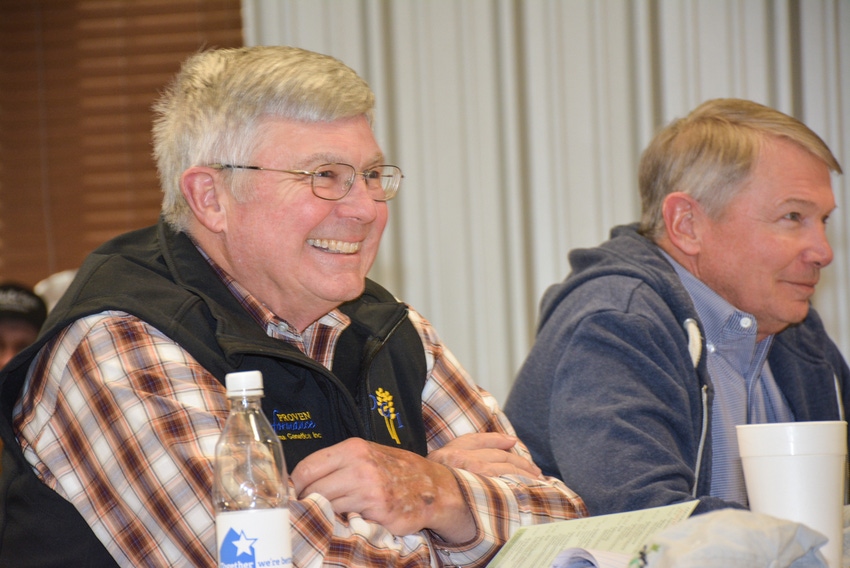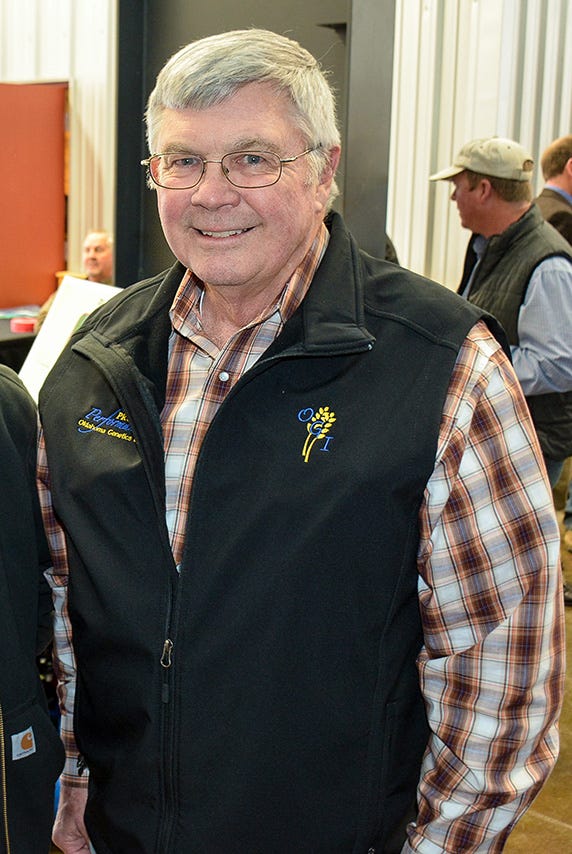
About 20 years ago, standing at the counter of the local John Deere dealership, an elderly farmer purchasing plow sweeps looks at Fred Schmedt and says, "Boy, this stuff has gotten expensive, hasn't it?" Schmedt, a no-till farmer, jokingly replies, "I don't know. I'm allergic to steel."
Schmedt is a no-till farmer in southwest Oklahoma. While his farming roots date back to the late 1800s when his great grandparents began farming near Altus, his transition from conventional tillage to no-till started about 21 years ago.
"The first half-section we quit plowing was last plowed in the fall of 1997," says Schmedt, who also farms with his brother Wayne. "We are 100% no-till on our dryland."
Conserving water partially motivated the change, but Schmedt cites labor as the biggest instigator. The brothers farm 3,000 acres in Jackson and Tillman counties. Fred lives in Ardmore, Carter County, about 130 miles from the nearest field in Tillman County. Wayne resides about 300 miles south in New Braunfels, Texas. Fred also runs cattle in Carter County.
"We're small farmers in our neighborhood," Schmedt says. "We don't have any hired help." They plant the wheat, grain sorghum and guar themselves and hire a local farmer to plant cotton and use custom harvesters to harvest the crops. They use their coop to apply the fertilizer.
"It's not as complicated as it sounds," Schmedt says. “We have the house we grew up in in Altus and that is our base during busy seasons. It works for us."
With no-till, "You spend a lot on chemicals, but you save a lot of time and you don't have as big of an investment in equipment. We sold all our tillage equipment a long time ago."

Oklahoma grower Fred Schmedt.
His advice to anyone contemplating no-till: be committed. "Stick it out until you figure out what works for your operation. One sure way to reinforce your commitment is to sell your tillage equipment,” Schmedts says, smiling.
For generations, Schmedt's family has produced primarily wheat with some cotton and a bit of grain sorghum. Their grandfather, Theodore Alexander, known as "Thea," farmed in Jackson County from the spring of 1908 until he sowed his last wheat crop in 1983 at the age of 92.
"We used to think we were wheat farmers, but you can't be a wheat farmer anymore," Schmedt says, referring to low commodity prices. "That doesn't work. We've got more cotton than we've ever had."
CROP ROTATION
Crop rotation plays a significant role in the Schmedt's farming operation. Previously, their rotation pattern was wheat, wheat, cotton, grain sorghum. "Once you start no-tilling, you've got to have rotation. It won't work without it. And now, due to economics, we're pushing so far on the cotton end, it's messing up our rotation. We've got too many acres of dryland cotton," he says.
Grain sorghum is also a part of their rotation. Previously, the Schmedt brothers planted sorghum in mid-April and a later crop at the end of June. But the sugarcane aphid has them rethinking their timing. "The sugarcane aphid really hurt our rotation because it took the profitability away from grain sorghum.
"We tried, both for rotational purposes and to spread out the workload, to plant early grain sorghum and then plant it again after wheat at the end of June, beginning of July. But that later planting period pretty much assures you're going to have sugarcane aphid problems. So, we're going to steer away from that."
Guar is a limited part of the brother's rotation cycle. They first planted the legume as part of the NRCS Conservation Stewardship Program in 2015. "We had a seed guar contract, which is better than growing it as a commodity," Schmedt says. "It's worked for us. It's an interesting crop."
Overall, wheat stubble is Schmedt's first rotation choice. "The best land preparation for cotton is still wheat stubble but with the wheat market the way it is, we've gotten into more of a cotton, grain sorghum rotation. You've got to ebb and flow with what's going on."
COVER CROPS
Schmedt says they've dallied with cover crops, primarily wheat. "Those are difficult in our area. With dryland, our limiting factor is moisture, and if your cover crop termination isn't timely, and you don't get rain, it doesn't work out too well.
"For us, standing residue is the best cover for our next crop rather than having something growing that is using moisture that we have to terminate."
CHALLENGES
One of Schmedt's biggest challenges is herbicide-resistant weeds such as marestail or careless weed.
Along with crop rotation, he uses as many different chemistries as possible to suppress their growth. "I feel like I'm reading chemical labels all the time. You don't want to plant dryland cotton into dryland cotton like we did in 2019, or grain sorghum after grain sorghum. But if you're rotating crops like we do, you've got to watch your chemistry, or you'll put something on one crop that means you can't grow the next crop. You've got to keep up with what you're doing."
To avoid those mistakes and reduce confusion, the brothers maintain their chemical records in a color-coded spreadsheet. For example, they might shade a chemistry green to indicate that they can't grow cotton there next year. "We're not a big operation, but it is easy to forget so we try to keep it straight."
ECONOMICS
Before farming fulltime, Schmedt spent 33 years as an agricultural economist and farm management specialist for the Noble Foundation, now called the Noble Research Institute, in Ardmore. The retired economist's economic outlook on farming today? "It's tough. I think most people would tell you, and we're in that boat, without the MFP payments, we'd be in a bad way today.
"I don't know when commodity wheat is going to be a viable crop again, and the cotton deal is our best hope. My granddad (Thea) used to say, 'You've got to have a 10-year outlook,' and to have some optimism today, you need to be looking on down the road. Things always get better, so I think they will."
About the Author(s)
You May Also Like






